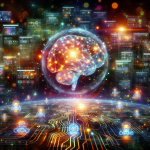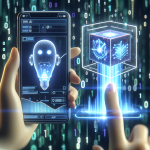Introduction to AI-Driven UX Design
Artificial Intelligence (AI) is revolutionizing user experience (UX) design by enabling more personalized, intuitive, and efficient digital interactions. As businesses compete to attract and retain customers in an increasingly digital world, leveraging AI in UX design helps deliver intelligent systems that adapt to individual user behaviors and preferences. The fusion of AI with UX design represents a transformative shift that is enhancing how users engage with products and services across industries.
How AI Enhances User Experience
AI-driven UX design enhances customer interactions in multiple significant ways, making products more responsive, accessible, and valuable.
1. Personalization at Scale
AI enables real-time personalization by analyzing user behavior, preferences, and historical data. This allows digital interfaces to adapt content, layout, and functionality to individual users, creating tailored experiences that increase user satisfaction and engagement. For example, AI-powered recommendation engines on streaming platforms and e-commerce sites deliver personalized product or content suggestions that align with each user’s unique tastes.
2. Predictive Interaction
Through machine learning algorithms, AI systems can anticipate user actions and proactively assist them. This predictive capability streamlines interactions by reducing the steps needed to achieve a goal. Whether it’s autofill suggestions, smart search predictions, or dynamic user flows, predictive interaction enhances efficiency and user delight.
3. Improved Accessibility
AI technologies such as natural language processing (NLP), speech recognition, and computer vision support users with diverse abilities, improving accessibility. Voice-controlled interfaces, screen readers with AI cognition, and real-time translation tools help create inclusive digital experiences for a wider audience.
4. Conversational Interfaces
The integration of AI-driven chatbots and virtual assistants has transformed user communication with brands. These interfaces provide instant responses, assist with customer service, and guide users through complex processes. They also learn from interactions, continuing to improve over time to meet user needs more effectively.
Data-Driven UX Design and Continuous Improvement
AI thrives on data, and this strength translates directly into creating UX designs informed by real user behavior.
1. User Behavior Analytics
AI processes large volumes of user interaction data to uncover patterns and areas of friction in customer journeys. Designers can use these insights to optimize user flows, adjust interface elements, and improve calls-to-action based on what data reveals about actual usage.
2. UX Testing and Optimization
With AI, A/B testing becomes more efficient and insightful. Machine learning models can analyze test results and refine designs iteratively, reducing the time and guesswork traditionally associated with manual testing methods. This enables designers to make evidence-based decisions at every stage of the design cycle.
Challenges and Ethical Considerations
While AI offers substantial benefits, it also raises challenges that UX designers must address with care.
1. Privacy and Data Security
Personalized and predictive experiences rely heavily on user data, which raises privacy concerns. Designers must prioritize transparent data practices and ensure compliance with data protection regulations to maintain user trust.
2. Avoiding Bias in Design
AI systems can inadvertently reflect or amplify biases present in training data. This can lead to exclusionary design or discriminatory user experiences. It’s essential for UX teams to regularly audit AI outputs and foster diversity in both datasets and development teams to promote fairness and inclusivity.
The Future of AI and UX Design
The future holds exciting possibilities for AI-driven UX, including hyper-personalized experiences, context-aware systems, and emotional intelligence in design. As AI technologies evolve, UX designers will have powerful tools to create more human-centered digital environments that not only meet functional needs but also engage users on a deeper emotional level.
Conclusion
AI-driven UX design is fundamentally transforming customer interactions by making digital experiences more personalized, efficient, and inclusive. By combining creativity with intelligent technology, designers can craft solutions that anticipate needs, reduce friction, and engage users more meaningfully. As this field continues to grow, integrating ethical AI practices will be essential to ensure technological advancement leads to positive, human-centric outcomes.





